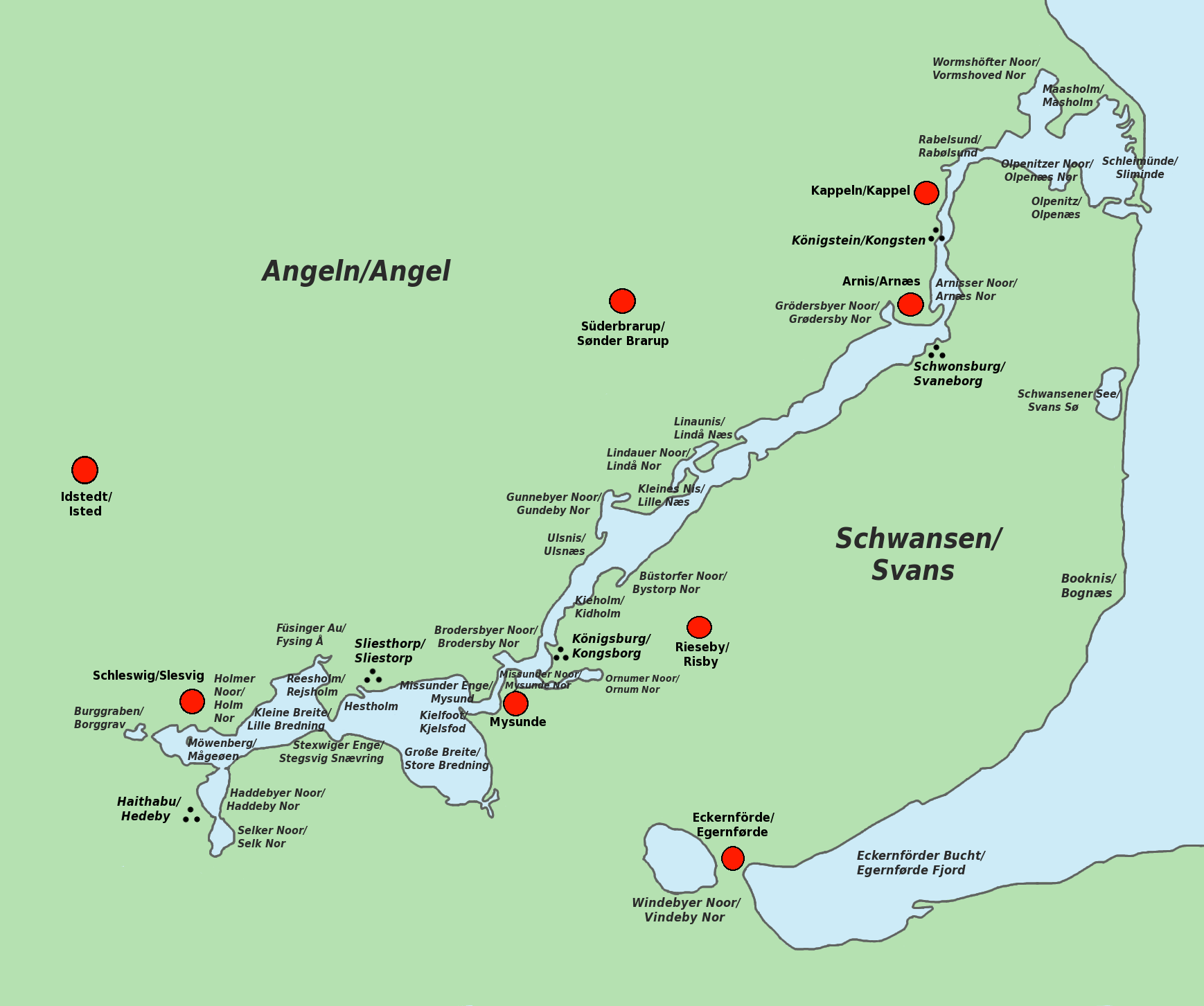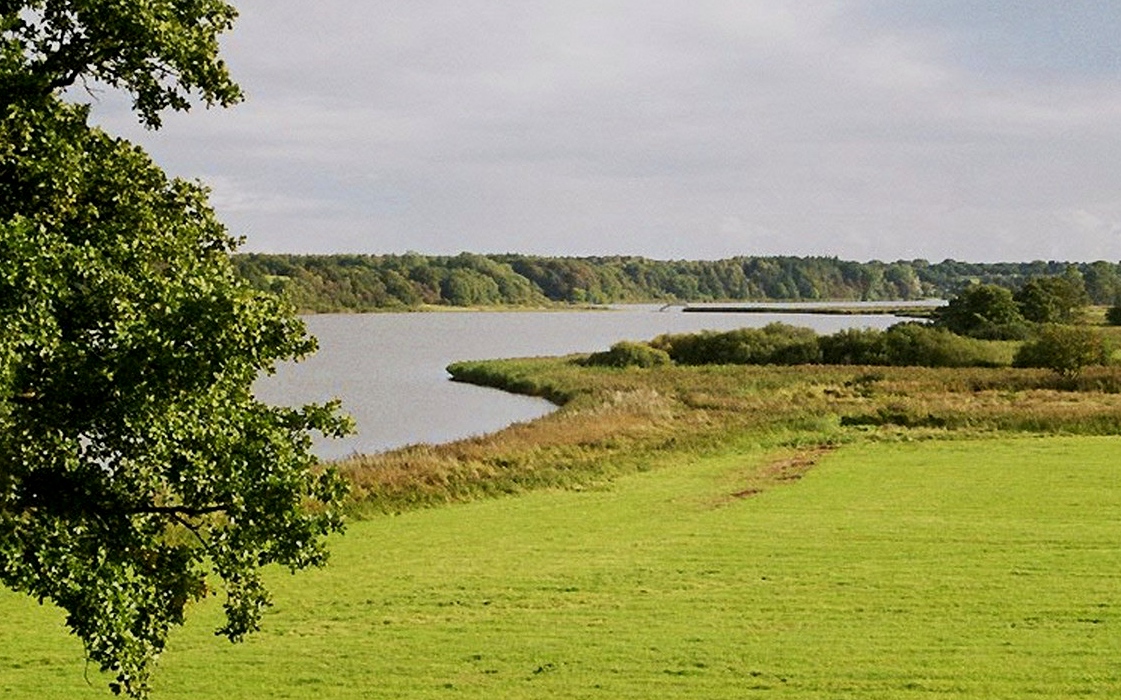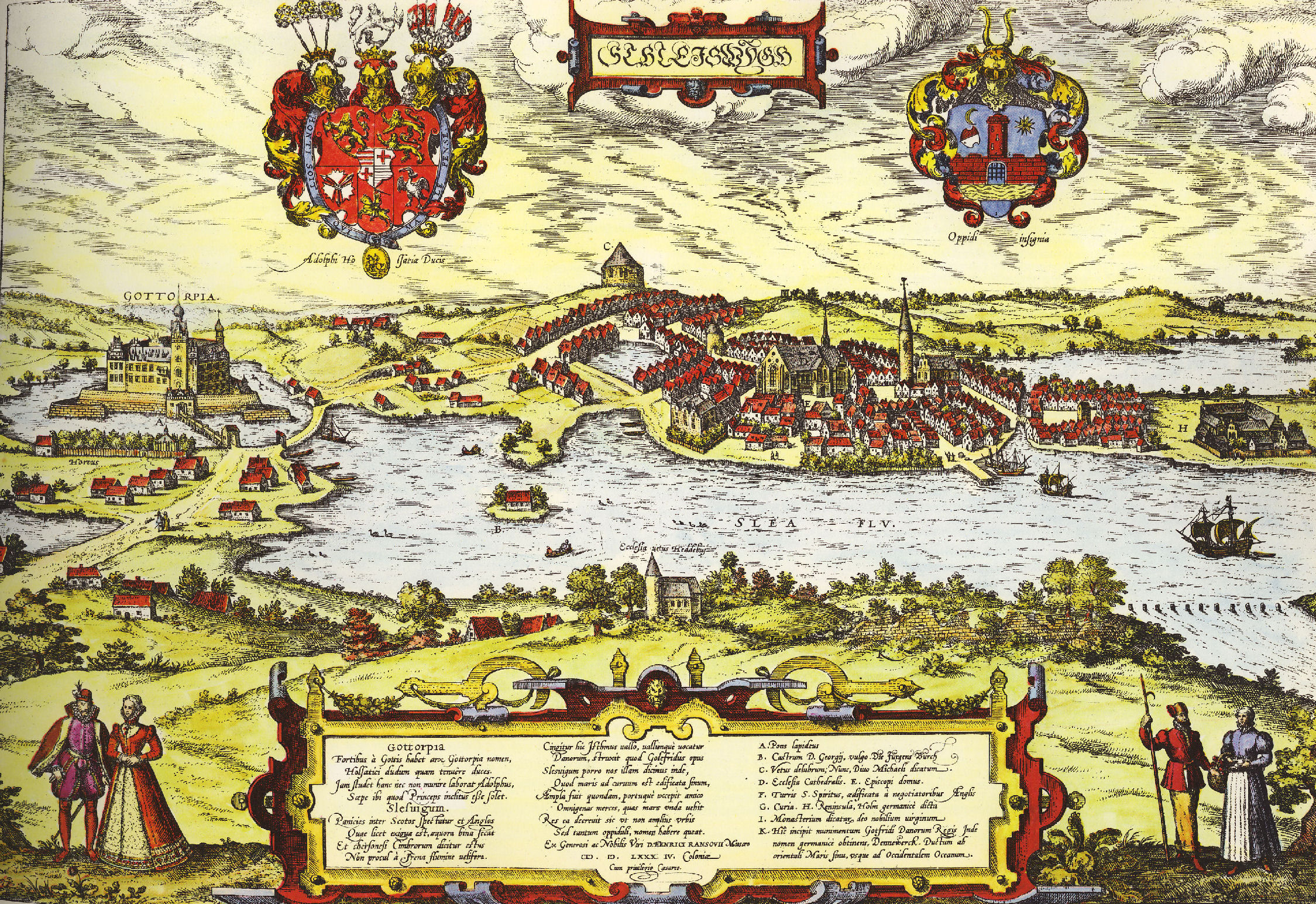|
Schlei
The Schlei (; da, Slien, also ''Slesvig Fjord''e.g. in: Adolph Frederik Bergsøe: ''Den danske stats statistik'', Kjøbenhavn 1844, p. 156) (more often referred to in English as the Sly Firth) is a narrow inlet of the Baltic Sea in Schleswig-Holstein in northern Germany. It stretches for approximately 20 miles (32 kilometers) from the Baltic near Kappeln and Arnis to the city of Schleswig. Along the Schlei are many small bays and swamps. It separates the Angeln peninsula to the north from the Schwansen peninsula to the south. The important Viking settlement of Hedeby was located at the head of the firth (fjord In physical geography, a fjord or fiord () is a long, narrow inlet with steep sides or cliffs, created by a glacier. Fjords exist on the coasts of Alaska, Antarctica, British Columbia, Chile, Denmark, Germany, Greenland, the Faroe Islands, Ice ...), but was later abandoned in favor of the city of Schleswig. A museum has been built on the site, telling the story of t ... [...More Info...] [...Related Items...] OR: [Wikipedia] [Google] [Baidu] |
Hedeby
Hedeby (, Old Norse ''Heiðabýr'', German language, German ''Haithabu'') was an important Danes, Danish Viking Age (8th to the 11th centuries) trading settlement near the southern end of the Jutland Peninsula, now in the Schleswig-Flensburg district of Schleswig-Holstein, Germany. It is the most important archaeological site in Schleswig-Holstein. Around 965, chronicler Ibrahim ibn Yaqub, Abraham ben Jacob visited Hedeby and described it as, "a very large city at the very end of the world's ocean." The settlement developed as a trading centre at the head of a narrow, navigable inlet known as the Schlei, which connects to the Baltic Sea. The location was favorable because there is a short portage of less than 15 km to the Treene River, which flows into the Eider River, Eider with its North Sea estuary, making it a convenient place where goods and ships could be pulled on a corduroy road overland for an almost uninterrupted seaway between the Baltic and the North Sea and avoid ... [...More Info...] [...Related Items...] OR: [Wikipedia] [Google] [Baidu] |
Arnis, Germany
Arnis (; da, Arnæs) is the smallest town in Germany both by population and by area. At a population of c. 300 and a total area of 0.45 km2, Arnis is part of the ''Amt'' Kappeln-Land in the district of Schleswig-Flensburg, in Schleswig-Holstein, Germany. It was founded in 1667 by shipping families from the nearby village Kappeln who wanted to avoid serfdom. The local ''Skipper's Church'' was erected in 1673. Originally Arnis was a skipper town with up to 90 sailing-ships (1864). In the late 20th century four shipyards were the basis of its economy. Today Arnis is a tourism showplace. History Originally Arnis was a peninsula in the fjord-like Schlei. During the conflicts with the Counts of Schauenburg and Holstein and the Hanseatic League about the status of Schleswig the Danish king Eric of Pomerania ordered in 1415 the construction of two primitive castles in the Schlei, Schwonsburg and the opposite height of the today cemetery of Arnis. For better defence the isthmu ... [...More Info...] [...Related Items...] OR: [Wikipedia] [Google] [Baidu] |
Angeln
Anglia (German and Low German: ''Angeln''; Danish and South Jutlandic: ''Angel''; ang, Engla land) is a small peninsula on the eastern coast of Jutland (the Cimbric Peninsula). Jutland consists of the mainland of Denmark and the northernmost German state of Schleswig-Holstein. Anglia belongs to the region of Southern Schleswig, which constitutes the northern part of Schleswig-Holstein, and protrudes into the Bay of Kiel of the Baltic Sea. To the south, Anglia is separated from the neighbouring peninsula of Swania (Ger. ''Schwansen'', Dan. ''Svans'' or ''Svansø'') by the Sly Firth (Ger. ''Schlei'', Dan. ''Sli''), and to the north from the Danish peninsula of Sundeved (Ger. ''Sundewitt'') and the Danish island of Als (Ger. ''Alsen'') by the Flensburg Firth (Ger. ''Flensburger Förde'', Dan. ''Flensborg Fjord''). The landscape is hilly, dotted with numerous lakes. Whether ancient Anglia conformed to the borders of the Anglian Peninsula is uncertain. It may have been somewh ... [...More Info...] [...Related Items...] OR: [Wikipedia] [Google] [Baidu] |
Schleswig, Schleswig-Holstein
Schleswig (, , ; da, Slesvig; South Jutlandic: ''Sljasvig''; nds, Sleswig; archaic English: ''Sleswick'') is a town in the northeastern part of Schleswig-Holstein, Germany. It is the capital of the '' Kreis'' (district) Schleswig-Flensburg. It has a population of about 27,000, the main industries being leather and food processing. It takes its name from the Schlei, an inlet of the Baltic sea at the end of which it sits, and ''vik'' or ''vig'' which means "bay" in Old Norse and Danish. Schleswig or Slesvig therefore means "bay of the Schlei". History The Viking settlement of Hedeby, located south of the modern town, was first mentioned in 804. It was a powerful settlement in the Baltic region, dominating the area for more than 200 years. In 1050, following several destructions, the population was moved to the opposite shore of the Schlei, becoming the city of Schleswig. In 1066 Hedeby was finally destroyed, and Schleswig remained as a part of the Danish kingdom. In 1544, Gottor ... [...More Info...] [...Related Items...] OR: [Wikipedia] [Google] [Baidu] |
Schlei (Amt)
Schlei was an ''Amt'' ("collective municipality") in the district of Rendsburg-Eckernförde, in Schleswig-Holstein, Germany. It was situated on the south-eastern bank of the Schlei, an inlet of the Baltic Sea, between Eckernförde and Schleswig. The village Fleckeby was the seat of the ''Amt''. In January 2008, it was merged with the ''Ämter'' Schwansen and Windeby to form the ''Amt'' Schlei-Ostsee. The ''Amt'' Schlei consisted of the following municipalities (population in 2005 between brackets): * Fleckeby (1,808) * Güby (842) * Hummelfeld (275) * Kosel (1,339) * Rieseby Rieseby ( da, Risby) is a municipality in the district of Rendsburg-Eckernförde, in Schleswig-Holstein, Germany. References Municipalities in Schleswig-Holstein Rendsburg-Eckernförde {{RendsburgEckernförde-geo-stub ... (2,559) Former Ämter in Schleswig-Holstein {{RendsburgEckernförde-geo-stub ... [...More Info...] [...Related Items...] OR: [Wikipedia] [Google] [Baidu] |
Kappeln
Kappeln ( da, Kappel) is a town in the district of Schleswig-Flensburg, in Schleswig-Holstein, Germany. It is situated on the north bank of the Schlei, approx. northeast of Schleswig, and southeast of Flensburg. For the eastern Angeln and the northern Schwansen, Kappeln has center function. History Kappeln was first mentioned in records in 1357. In 1870 Kappeln received town privileges, after it was a ''Flecken''. A ''Flecken'' was a market town in Schleswig. Twin towns – sister cities Kappeln is twinned with: * Faaborg-Midtfyn, Denmark (1984) * Ustka, Poland (1991) * Merate Merate ( Brianzöö: ) is a municipality of 14,872 inhabitants in the province of Lecco, in the northern Italian region of Lombardy. It is served by Cernusco-Merate railway station. History The name ''Melatum'' appeared for the first time in ..., Italy (2007) Notable people * Jacob Moser (1839–1922), entrepreneur, Zionist and philanthropist *Friedrich Koch (1859–1947), church painter R ... [...More Info...] [...Related Items...] OR: [Wikipedia] [Google] [Baidu] |
Schwansen
Swania (german: Schwansen, da, Svans or ''Svansø'', meaning "swan island/peninsula") is a peninsula in Schleswig-Holstein, Germany, protruding into the Baltic Sea. It is located between the Eckernförde Bay to the south and the Schlei (English: Sly) inlet to the north. The Danish dialect South Jutlandic in the Angel Danish variant was still spoken in Swania around 1780 (the last time in the villages near the Schlei). Denmark lost Swania following the Second Schleswig War in 1864. Schwansen is the name of the former ''Amt'' ("collective municipality") Schwansen Swania (german: Schwansen, da, Svans or ''Svansø'', meaning "swan island/peninsula") is a peninsula in Schleswig-Holstein, Germany, protruding into the Baltic Sea. It is located between the Eckernförde Bay to the south and the Schlei (Englis ..., which covered most of the peninsula. The seat of the ''Amt'' was in Damp. Peninsulas of Schleswig-Holstein Regions of Schleswig-Holstein Peninsulas of the Baltic ... [...More Info...] [...Related Items...] OR: [Wikipedia] [Google] [Baidu] |
Schleswig-Holstein
Schleswig-Holstein (; da, Slesvig-Holsten; nds, Sleswig-Holsteen; frr, Slaswik-Holstiinj) is the northernmost of the 16 states of Germany, comprising most of the historical duchy of Holstein and the southern part of the former Duchy of Schleswig. Its capital city is Kiel; other notable cities are Lübeck and Flensburg. The region is called ''Slesvig-Holsten'' in Danish and pronounced . The Low German name is ''Sleswig-Holsteen'', and the North Frisian name is ''Slaswik-Holstiinj''. In more dated English, it is also known as ''Sleswick-Holsatia''. Historically, the name can also refer to a larger region, containing both present-day Schleswig-Holstein and the former South Jutland County (Northern Schleswig; now part of the Region of Southern Denmark) in Denmark. It covers an area of , making it the 5th smallest German federal state by area (including the city-states). Schleswig was under Danish control during the Viking Age, but in the 12th century it escaped full control ... [...More Info...] [...Related Items...] OR: [Wikipedia] [Google] [Baidu] |
Baltic Sea
The Baltic Sea is an arm of the Atlantic Ocean that is enclosed by Denmark, Estonia, Finland, Germany, Latvia, Lithuania, Poland, Russia, Sweden and the North and Central European Plain. The sea stretches from 53°N to 66°N latitude and from 10°E to 30°E longitude. A marginal sea of the Atlantic, with limited water exchange between the two water bodies, the Baltic Sea drains through the Danish Straits into the Kattegat by way of the Øresund, Great Belt and Little Belt. It includes the Gulf of Bothnia, the Bay of Bothnia, the Gulf of Finland, the Gulf of Riga and the Bay of Gdańsk. The " Baltic Proper" is bordered on its northern edge, at latitude 60°N, by Åland and the Gulf of Bothnia, on its northeastern edge by the Gulf of Finland, on its eastern edge by the Gulf of Riga, and in the west by the Swedish part of the southern Scandinavian Peninsula. The Baltic Sea is connected by artificial waterways to the White Sea via the White Sea–Baltic Canal and to the German ... [...More Info...] [...Related Items...] OR: [Wikipedia] [Google] [Baidu] |
Germany
Germany,, officially the Federal Republic of Germany, is a country in Central Europe. It is the second most populous country in Europe after Russia, and the most populous member state of the European Union. Germany is situated between the Baltic and North seas to the north, and the Alps to the south; it covers an area of , with a population of almost 84 million within its 16 constituent states. Germany borders Denmark to the north, Poland and the Czech Republic to the east, Austria and Switzerland to the south, and France, Luxembourg, Belgium, and the Netherlands to the west. The nation's capital and most populous city is Berlin and its financial centre is Frankfurt; the largest urban area is the Ruhr. Various Germanic tribes have inhabited the northern parts of modern Germany since classical antiquity. A region named Germania was documented before AD 100. In 962, the Kingdom of Germany formed the bulk of the Holy Roman Empire. During the 16th ce ... [...More Info...] [...Related Items...] OR: [Wikipedia] [Google] [Baidu] |
Inlet
An inlet is a (usually long and narrow) indentation of a shoreline, such as a small arm, bay, sound, fjord, lagoon or marsh, that leads to an enclosed larger body of water such as a lake, estuary, gulf or marginal sea. Overview In marine geography, the term "inlet" usually refers to either the actual channel between an enclosed bay and the open ocean and is often called an "entrance", or a significant recession in the shore of a sea, lake or large river. A certain kind of inlet created by past glaciation is a fjord, typically but not always in mountainous coastlines and also in montane lakes. Multi-arm complexes of large inlets or fjords may be called sounds, e.g., Puget Sound, Howe Sound, Karmsund (''sund'' is Scandinavian for "sound"). Some fjord-type inlets are called canals, e.g., Portland Canal, Lynn Canal, Hood Canal, and some are channels, e.g., Dean Channel and Douglas Channel. Tidal amplitude, wave intensity, and wave direction are all factors that in ... [...More Info...] [...Related Items...] OR: [Wikipedia] [Google] [Baidu] |


.jpg)




